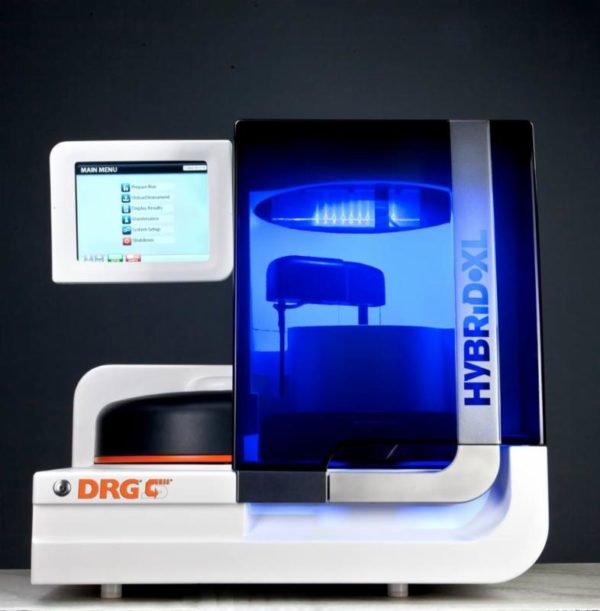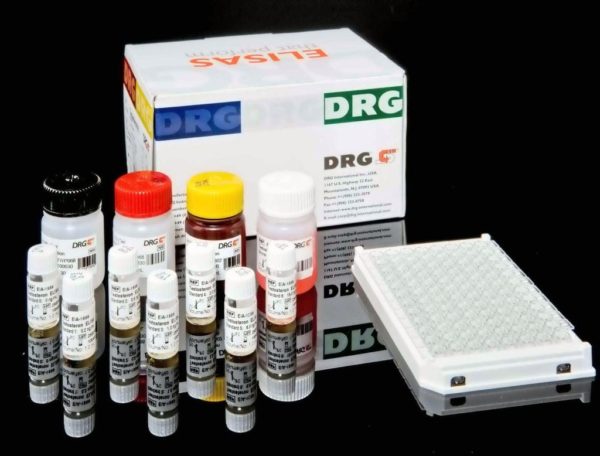Description
The DRG:HYBRiD-XL T4 is an enzyme immunoassay for the quantitative in vitro diagnostic measurement of total Thyroxine (T4) in serum and plasma.
Only for use with the DRG:HYBRiD-XL Analyzer.
The thyroid gland and associated hormones are a major component of the endocrine system. They are responsible for regulating diverse biochemical processes throughout the body
that are essential for protein synthesis, normal development, metabolic and neural activity. The thyroid hormones triiodothyronine (T3) and thyroxine (T4), are tyrosine-based hormones produced by the thyroid gland. Proteolytic cleavage of follicular thyroglobulin releases T4 into the bloodstream. Approximately 30% of the circulating T4 is enzymatically deiodinated at the 5′ position in the peripheral tissues to yield T3, which has a much greater metabolic activity. More than 99% of T4 is reversibly bound to three plasma proteins in blood -thyroxine binding globulin (TBG) binds 70%, thyroxine binding pre-albumin (TBPA) binds 20%, and albumin binds 10% (1,2). The manifestations of thyroid dysfunction can result from disease of the thyroid gland (primary hyperthyroidism or hypothyroidism), disease of the pituitary gland (secondary hyperthyroidism or hypothyroidism) or disease of the hypothalamus (tertiary hyperthyroidism or hypothyroidism. Measurement of total T4, TSH, Free T3 and Free T4 by immunoassay is a reliable and convenient method to determine the presence of thyroid disorders in patients (3). Increased levels of T4 have been found in hyperthyroidism due to GraveÕs disease and
PlummerÕs disease and in acute and subacute thyroiditis. Low levels of T4 have been associated with congenital hypothyroidism, myxedema, chronic thryoiditis (HashimotoÕs disease), and with some genetic abnormalities (4,5,6,7).
The DRG:HYBRiD-XL T4 Kit is a solid phase enzyme-linked immunosorbent assay (ELISA) based on the principle of competitive binding. The antibody coated wells (ACW) of the reagent cartridges are coated with a polyclonal antibody directed towards a unique antigenic site of the T4 molecule. Endogenous T4 of a patient sample competes with a T4-horseradish peroxidase conjugate for binding to the coated antibody. After incubation the unbound conjugate is washed off. The amount of bound peroxidase conjugate is inversely proportional to the concentration of T4 in the sample. Having added the substrate solution, the intensity of colour developed is inversely proportional to the concentration of
T4 in the patient sample.




